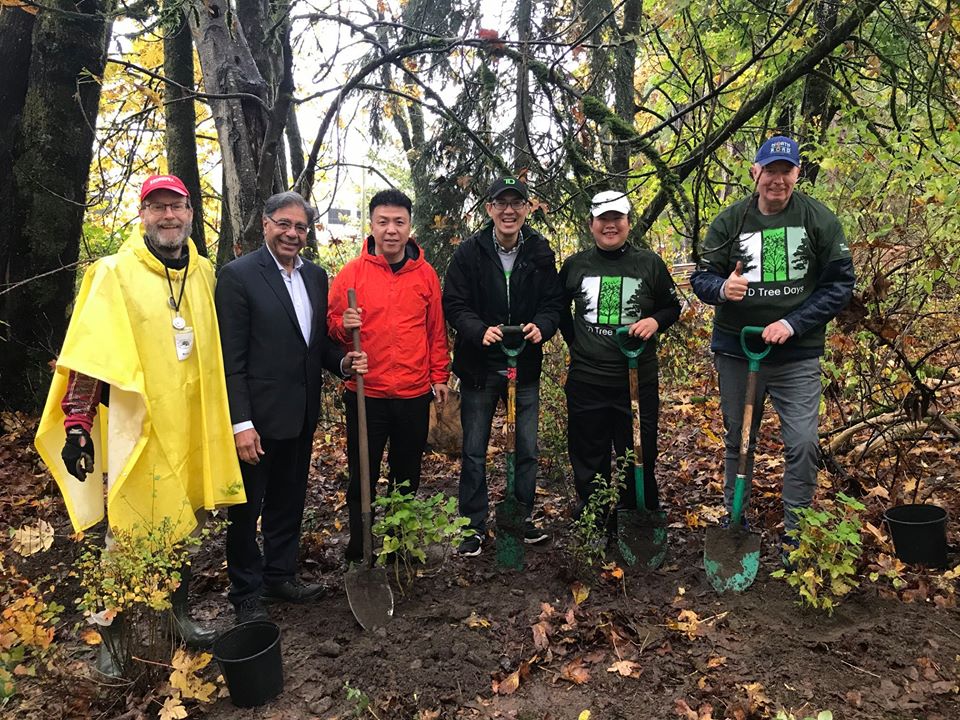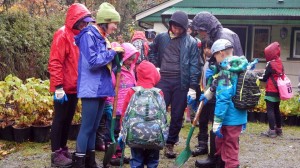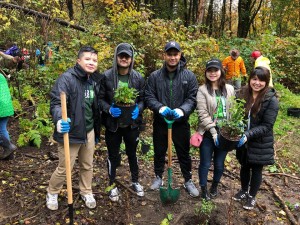The Burnaby Lake Park Association (BLPA) did their part to mitigate the effects of climate change. They worked with TD to deliver another TD Tree Days event during the annual EcoBlitz, stewardship activities happening across the Metro Vancouver Regional Parks system this month.
EcoBlitz events allow community volunteers to actively participate in preserving, restoring, and protecting the natural environment in regional parks, which develops respect, appreciation and enjoyment of the park’s natural attributes.
This year’s event took place on Sunday, October 20, 2019 at the Lenson Field restoration site, located at the south east end of Burnaby Lake Regional Park near Cariboo Dam. The BLPA, TD and over 100 volunteers who braved the rain and planted over 550 of these native trees, shrubs and plants of 15 different native species on this site.
Thank you to Mayor Mike Hurley, Councillors Dhaliwal and James Wang for coming out to show their support.

Photo: E Wong
BLPA Director Bryan Green, Councillors Sav Dhaliwal and James Wang, Mayor Mike Hurley and BLPA Chair, Irene Lau
Since 2018, the BLPA with support from Metro Vancouver Regional Parks staff, has held 12 work parties here with over 280 volunteers from Burnaby and neighbouring communities. These hard working volunteers have put in over 760 hours removing over 1600 kilograms (3500 pounds) of invasive species which include English ivy, Himalayan blackberry, and Himalayan balsam. These non-native organisms can alter habitats and often displace native vegetation through competition for water, nutrients, and space. In 2018, they put 400 native trees, shrubs and plants in the ground. They include recognisable varieties such as Vine Maples and Sword Ferns. However, the plants are also chosen for characteristics that are valuable in restoration projects such as the Salmonberry. Not only are its blooms one of the first signs of spring, it grows into dense thickets to provide habitat, provide a food source and its deep roots and suckering habits help prevent erosion by holding soil intact.
Check out the Event Photo Album on Facebook here.



